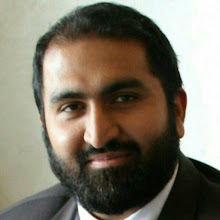An often cited statement of ‘Ā’ishah (ra) regarding the issue of khātam an-nabiyyīn quite often becomes the target of undue criticism. Her statement is as follows:
حدثنا حسين بن محمد، قال: حدثنا جرير بن حازم، عن محمد، عن عائشة، قالت: قولوا: خاتم النبيين، ولا تقولوا: لا نبي بعده.
“Ḥusayn ibn Muḥammad told us, he said: Jarīr ibn Ḥāzim told us from Muḥammad, who narrated from ‘Ā’ishah, she said: ‘Say: [He is] the Seal of the Prophets and do not say: There will be no prophet after him.”[1]
الربيع بن صبيح، عن محمد بن سيرين، عن عائشة، قالت: لا تقولوا: لا نبي بعد محمد، وقولوا :خاتم النبيين
“ar-Rabī‘ ibn Ṣubayḥ narrated from Muḥammad ibn Sīrīn, who narrated from ‘Ā’ishah, she said: ‘Do not say: There will be no prophet after Muḥammad, instead say: [He is] the Seal of the Prophets.”[2]
Adversaries argue that, as Muḥammad ibn Sīrīn, who appears as a narrator in both āthār, never heard anything directly from ‘Ā’ishah (ra), as Abū Ḥātim[3], al-Bukhārī[4] or others said, these statements would supposedly be munqaṭi‘, and so this athar would be weak (ḍa‘īf).
This, however, is a deception, whether intentional or negligent. One would expect from so-called ‘ulamā’ that they would be a bit more acquainted in the sciences of ḥadīth. What you see here, is called an irsāl, not an inqiṭā‘, so this hadīth is mursal and not munqaṭi‘.
The distinguishing factor between a ḥadīth mursal and a ḥadīth munqaṭi‘ is that a ḥadīth mursal is the statement of a tābi‘ī who directly attributes a statement or deed to the Holy Prophet (saw), regardless of whether this tābi‘ī took his knowledge from the ṣaḥāba or from other tābi‘ūn.[5]
Three of the al-A’immah al-Arba‘ah, namely al-Imām Abū Ḥanīfah, al-Imām Mālik und al-Imām Aḥmad ibn Ḥanbal were unanimously of the opinion that all mursal narrations are authoritatively binding (ḥujjah), provided that the mursil, i.e. the transmitting tābiʿī is thiqah.[6] And Muḥammad ibn Sīrīn was undoubtedly thiqah.[7]
The following two statements shed some more light on this matter:
al-Imām Ibn Qutaybah ad-Dīnawarī (d. 276 AH) said:
وأما قول عائشة رضي الله عنها: قولوا لرسول الله صلى الله عليه وسلم: خاتم الأنبياء، ولا تقولوا لا نبي بعده؛ فإنها تذهب إلى نزول عيسى عليه السلام، وليس هذا من قولها ناقضا لقول النبي صلى الله عليه وسلم: لا نبي بعدي؛ لأنه أراد: لا نبي بعدي، ينسخ ما جئت به.
“So far as it concerns the statement of ‘Ā’ishah (ra): ‘Call the Apostle of Allāh (saw): The Seal of the Prophets and do not say: There will be no prophet after him’; it is directed to the descent of ‘Īsā (as) and this statement of her does not contradict the statement of the Prophet (saw) ‘There will be no prophet after me’, because he meant: ‘There will be not prophet after me who will abrogate that with which I came.”[8]
ash-Shaykh Muḥammad Ṭāhir al-Ḥanafī (d. 986 AH) said:
وعن عائشة: قولوا أنه خاتم الأنبياء، ولا تقولوا لا نبي بعده. وهذا ناظر إلى نـزول عيسى، وهذا أيضا لا ينافي حديث "لا نبي بعدي"، لأنه أراد لا نبي ينسخ شرعه.
“And it is narrated from ‘Ā’ishah: ‘Say that he is the Seal of the Prophets and do not say: There will be no prophet after him’. This aims at the decent ‘Īsā, and this also does not contradict the ḥadīth ‘There will be no prophet after me’, because he meant that no prophet will abrogate his sharī‘ah.”[9]
[1] al-Muṣannaf by al-Imām Abū Bakr ‘Abd Allāh ibn Muḥammad ibn Abī Shaybah (d. 235 AH), ed. Muḥammad ʻAwwāmah, 1427 AH, Jeddah: Dār al-Qiblah, vol. 13, p.566
[2] Tafsīr by Yaḥyā ibn Sallām at-Taymī al-Baṣrī al-Ifrīqī al-Qayrawānī (d. 200 AH), ed. Hind Shalabī, 1425 AH, Beirut: Dār al-Kutub al-ʻIlmiyyah, vol. 2, p. 723
[3] Kitāb al-Marāsīl by ‘Abd ar-Raḥmān ibn Muḥammad ibn Abī Ḥātim (d. 327 AH), ed. Shukr Allāh ibn Ni‘mat Allāh Qūzhānī, 1418 AH, Beirut: Mu’assasat ar-Risālah, p. 188
[4] Jāmi‘ al-taḥṣīl fī aḥkām al-marāsīl by Ṣalāḥ ad-Dīn Abū Sa‘īd Khalīl ibn Kaykaldī ad-Dimashqī (d. 761 AH), ed. Ḥamdī ‘Abd al-Majīd Salafī, 1407 AH, Beirut: ‘Ālam al-Kutub, p. 264
[5] Miftāḥ al-wuṣūl ilā binā’ al-Furū‘ ‘ala l-uṣūl by Abū ‘Abd Allāh ash-Sharīf at-Tilimsānī (d. 771 AH), ed. Muḥammad ‘Alī Farkūs, 1419 AH, Mecca: al-Maktabah al-Makkiyyah, p. 349 & 353
[6] Sharḥ ‘ala l-manẓūmah al-bayqūniyyah fi l-muṣṭalaḥ by Muḥammad ibn ʿAbdu l-Bāqī az-Zurqānī (st. 1122 AH), ed. Ṣalāḥ Muḥammad ‘Uwayḍah, 1425 AH, Beirut, Libanon: Manshūrāt Muḥammad ‘Alī Bayḍūn, Dār al-Kutub al-ʻIlmiyyah, p. 144
[7] Ibn Hajar al-‘Asqalani writes about him in Taqrīb at-Tahddhīb „thiqah thabt“. This indicates the highest possible form of reliability used by Ibn Hajar in this work.
[8] Taʼwīl mukhtalaf al-ḥadīth wa-r-radd ʻalā man yurību fi l-akhbār al-muddaʻ ʻalayhā al-tanāquḍ by Abū Muḥammad ʻAbd Allāh ibn Muslim ibn Qutaybah ad-Dīnawarī, ed. Salīm Hilālī, 1430 AH, Riyadh
[9] Takmilah Majmaʻ biḥār al-anwār fī gharāʼib at-tanzīl wa-laṭāʼif al-akhbār by al-‘Allamah ash-Shaykh Majd ad-Dīn Muḥammad Ṭāhir ibn ʻAlī aṣ-Ṣiddīqī al-Hindī al-Fattanī al-Ghujratī al-Ḥanafī, ed. 1314 AH, Lucknow


- Follow Us on Twitter!
- "I HATE FACEBOOK!
- RSS
Contact